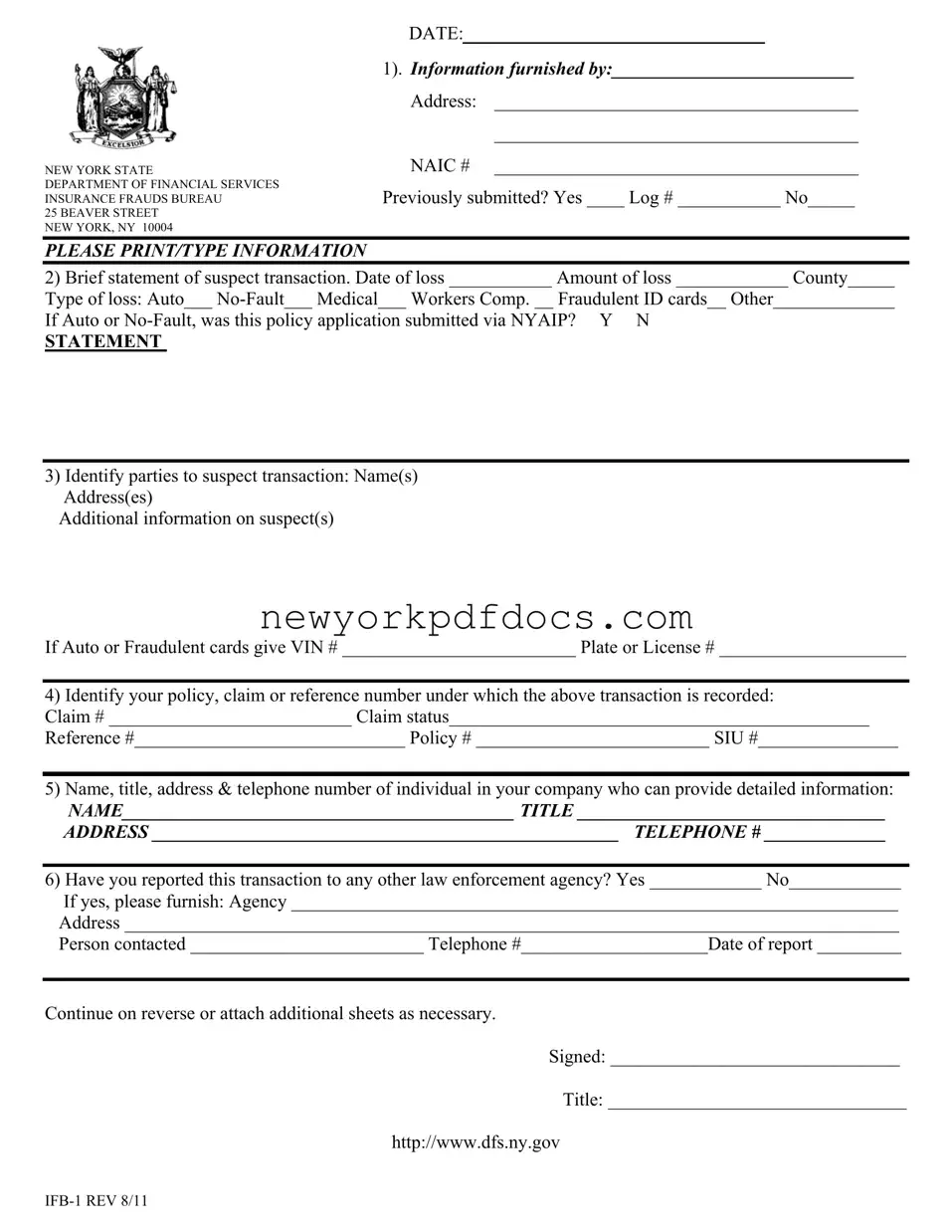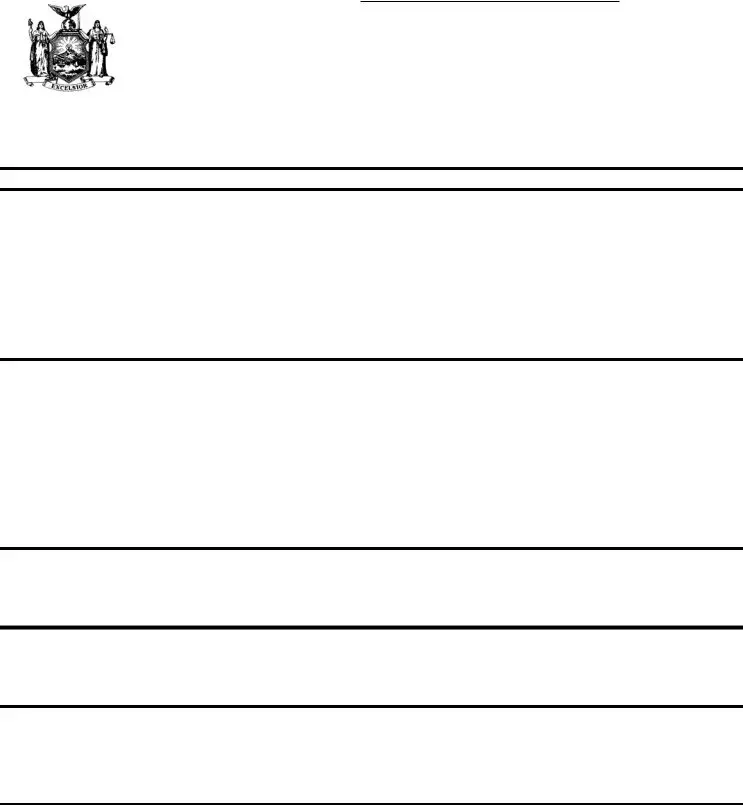PLEASE PRINT/TYPE INFORMATION
2)Brief statement of suspect transaction. Date of loss ___________ Amount of loss ____________ County_____
Type of loss: Auto___ No-Fault___ Medical___ Workers Comp. __ Fraudulent ID cards__ Other_____________
If Auto or No-Fault, was this policy application submitted via NYAIP? Y N
STATEMENT
3)Identify parties to suspect transaction: Name(s) Address(es)
Additional information on suspect(s)
If Auto or Fraudulent cards give VIN # _________________________ Plate or License # ____________________
4) Identify your policy, claim or reference number under which the above transaction is recorded:
Claim # __________________________ Claim status_____________________________________________
Reference #_____________________________ Policy # _________________________ SIU #_______________
5)Name, title, address & telephone number of individual in your company who can provide detailed information:
NAME__________________________________________ TITLE _________________________________
ADDRESS __________________________________________________ TELEPHONE # _____________
6)Have you reported this transaction to any other law enforcement agency? Yes ____________ No____________
If yes, please furnish: Agency _________________________________________________________________
Address ___________________________________________________________________________________
Person contacted _________________________ Telephone #____________________Date of report _________
Continue on reverse or attach additional sheets as necessary.
Signed: _______________________________
Title: ________________________________
http://www.dfs.ny.gov
IFB-1 REV 8/11

